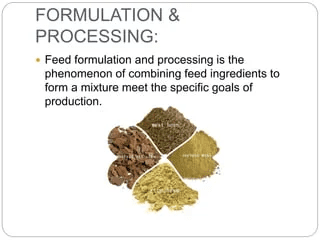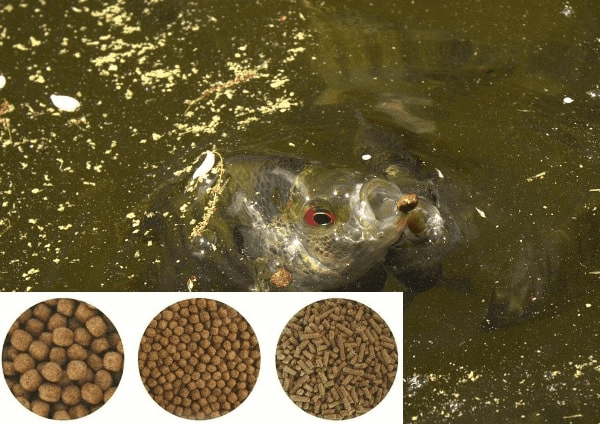Fish nutrition is the science that interprets the interaction of protein, lipids, energy, vitamins and minerals and other substances in food in relation for growth, reproduction, health, disease of fish and other normal physiological functions.
Proximate Analysis is a partitioning of compounds in a feed into six categories based on the chemical properties of the compounds. It is important to remember that proximate analysis is not a nutrient analysis, rather it is a partitioning of both nutrients and non-nutrients into categories based on common chemical properties.
The proximate analysis system: this system of analysis divides the food into six fractions namely; moisture, ash, crude protein, ether extract, crude fibre and nitrogen-free extractives.
The moisture content is determined as the loss in weight that results from drying a known weight of food to constant weight at 1000C. The ash content is determined by ignition of a known weight of the food at 550oC until all carbon has been removed.
The crude protein (CP) content is calculated from the nitrogen content of the food, determined by a modification of a technique originally devised by Kjeldahl over 100 years ago.
The ether extract (EE) fraction is determined by subjecting the food to a continuous extraction with petroleum ether for a defined period. The carbohydrate of the food is contained in two fractions, the crude fibre (CF) and the nitrogen-free extractives (NFE).
Read Also: Factors to Consider Before Starting a Fish Farming Business
Determination of calorific value of fish feed (bomb calorimetry)

Bomb Calorimeter
A bomb calorimeter is used to measure the heat created by a sample burned under an oxygen atmosphere in a closed vessel (bomb), which is surrounded by water, under controlled conditions.
About 1g of solid or liquid matter (food) is weighed in a crucible and placed inside a stainless-steel container (the “decomposition vessel”) filled with 30 bar (435psi) of oxygen.
Next, the sample is ignited through a cotton thread connected to an ignition wire inside the decomposition vessel and burned (combusted). After calibrating the decomposition vessel with a substance of a known heat, we know how much heat is necessary to heat up the water by 1°C.
After that, the food will be burned and the unit displays the amount of energy inside the food sample in units of calories, J, or BTU per gram. Some food samples burn better inside the calorimeter than others. This is the physical calorific value.
Feed Formation Pearson’s Method
The following are the guidelines when formulating feed using the Pearson Square method.
To use Pearson’s Square:
Subtract the nutrient requirement (middle of square) from the nutrient concentration (on left of square) in the feed across the diagonal (top left – middle = bottom right; bottom left – middle = top right).
Repeat this for both feeds.
Make any negative numbers on the right side of the square positive.
The answers on the right side of the square are the parts of each feed to include in the ration.
After subtracting across the diagonal, sum the parts of the two feeds to get the total.
Then, divide each part by the sum of the parts to calculate the percent of each feed in the ration.
In summary, foods are defined as natural sources of nutrients produced in the environment, and feeds are natural and manufactured sources of nutrients produced elsewhere and added to the environment.
Nutrients for cultured fish may come from various food sources, such as plankton, bacteria, insects and other fish from within the aquacultural ecosystem, and/or from organic matter and processed feeds added to the ecosystem.
Feed formulation using the Pearson Square method is one of the simplest feed formulation techniques available. This method focuses on the Digestible Crude Protein (DCP) as the most basic feed nutritional requirement.


Thanks for sharing. I read many of your blog posts, cool, your blog is very good.
Thank you so much and we are glad that you find our article very helpful